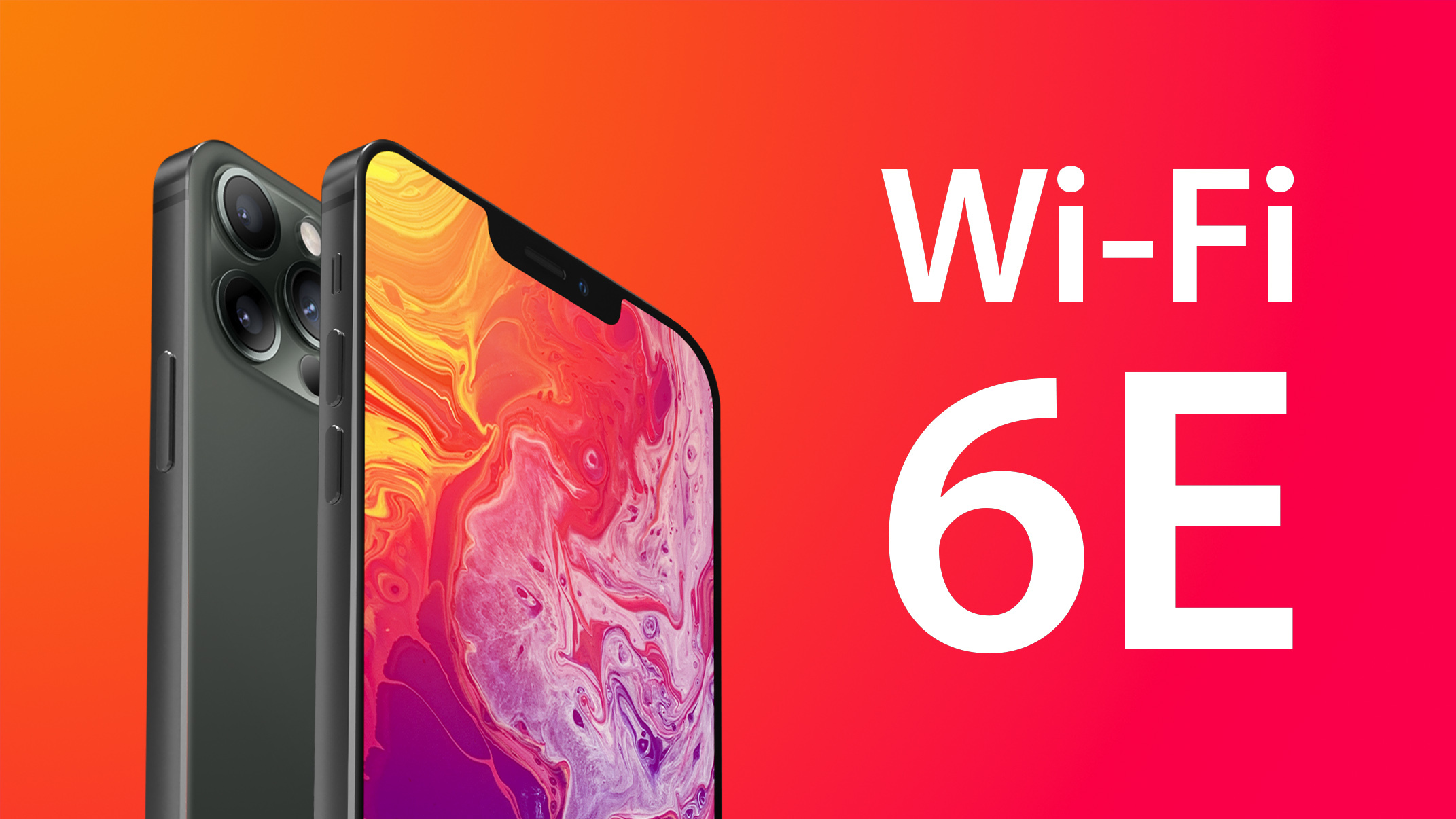![]()
The iPhone 13 is widely
expected to come with Wi-Fi 6E capabilities, and while it may seem rather nuanced to the average consumer, with only improved speeds and being "up to date" in the realm of Wi-Fi technology, it's actually a fairly significant improvement, laying the groundwork for much of what we know the future holds.
To truly understand Wi-Fi 6E,
MacRumors sat down for an exclusive interview with
Kevin Robinson, senior vice president of marketing for the Wi-Fi Alliance, to discuss the new generation of Wi-Fi, Wi-Fi's relationship with 5G, and what new experiences it will enable. The Wi-Fi Alliance is a group few have probably heard of, but as Kevin describes it, it's a crucial part of the Wi-Fi puzzle, consisting of a "who's who" in the connectivity space.Wi-Fi is a technology that's present in the majority of technology products consumers buy and is one of the very few technologies itself that's universal. That universality means that all Wi-Fi devices must work together, even if from another brand or purchased in a completely different part of the world. That's where the Wi-Fi Alliance comes in with a program it calls Wi-Fi Certified. This program certifies devices for use with Wi-Fi, ensuring interoperability. In simpler words, the next time you go shopping for a router or other Wi-Fi-centric device and see a "Wi-Fi Certified" label, thank the Wi-Fi Alliance.
Traditionally, the name of every new release of a device, product, or technology includes a sequential increase in number, with the highest number being the latest and greatest. With Wi-Fi, that's only recently been the case. Before "Wi-Fi 6," Wi-Fi technologies were given names like 802.11b, n, or ax. The change to a sequential naming structure, according to Kevin, all boils down to making it easier for consumers to make the right decisions for their Wi-Fi needs.Knowing that, Wi-Fi 6 is still a fairly new technology.
Released in 2019, it promises to offer users a more consistent, robust, and reliable Wi-Fi experience that works across a range of devices. Wi-Fi 6E, which on the surface is simply Wi-Fi 6 expanded into the 6-GHz range, was
announced more recently in January of 2020.
Wi-Fi 6E builds on Wi-Fi 6, which includes a flexible approach to consumer Wi-Fi needs that ensures every device in a home, whether a smart TV streaming 4K content from Netflix or a small HomeKit-enabled sensor, gets the Wi-Fi performance that's right for that specific device.Over the past year, Wi-Fi has skyrocketed in importance, with billions of people using it to live, work, and learn during the global health crisis. That increased reliance presented a challenge to Wi-Fi capacity, especially in densely populated areas. Wi-Fi 6E is designed specifically for this, where, thanks to the expansion into the 6-GHz range, the capacity of networks and routers has increased, along with performance.The bedrock of Wi-Fi 6E's creation is the realization that under previous technologies, there would not have been enough capacity for users. This similar realization is also a reason behind the rapid adoption of 5G, specifically 5G mmWave, which aims to deliver high performance in densely populated areas. Even with the increased reliance on Wi-Fi, the significant jump in capacity presented by Wi-Fi 6E seems, to the average consumer, almost overkill. I asked Kevin why, let's say, a family of four would need to take advantage of Wi-Fi 6E when it may be excessive for their needs.The technologies inside of routers and supported products only write half the story, the other half comes from internet service providers. I asked Kevin where ISPs fall into this grander scheme of our Wi-Fi world. Specifically, why should users invest in Wi-Fi 6E compatible devices if their ISPs cannot take advantage of them?
Kevin tells me that ISPs play a "very active" role in the Wi-Fi Alliance and that service providers who are on the "leading edge" wanting to deliver the best possible experience for their customers will take advantage of Wi-Fi 6E and all it has to offer.
I ended our conversation with a rounded question about the thinking behind Wi-Fi as a whole. Current measurement metrics for an average user include whether a TV show buffers or how long it takes to download a movie. My curiosity resides in where that mentality will be in 10 to 15 years; what arbitrary unit of measurement will we use to classify Wi-Fi speeds in the future?
The answer is that many things will be the same; content streaming and so forth will stay around. However, Kevin's main point is that consumers won't be as concerned over speeds as they're concerned over experiences, specifically virtual reality. Kevin believes that we're heading towards a future where Wi-Fi plays a more integral role in the immersion of VR experiences, rather than a focus on purely offering users high-speeds.
To me, Wi-Fi 6E is fundamental long-term in two ways. More and more people are using smart home devices, and in the Apple world, HomeKit-enabled devices. In a bubble, a single home has smart home products with laptops, smartphones, and more. Wi-Fi 6, and more so Wi-Fi 6E, is future-proofing Wi-Fi for a wide range of current and future devices.
Secondly, Wi-Fi 6E and how it plays a role in VR and AR seems to be one of the clearest reasons Apple could bring it to the iPhone 13 later this fall. Apple builds on technologies it places into its products, and as the company continues its development on "Apple Glasses," the inclusion of Wi-Fi 6E and all of the benefits of high-speed, optimized, high-load Wi-Fi seems like a clear step in enabling future VR/AR experiences.
Article Link:
Wi-Fi 6E Explained: What It Could Mean for iPhone 13 and Beyond



